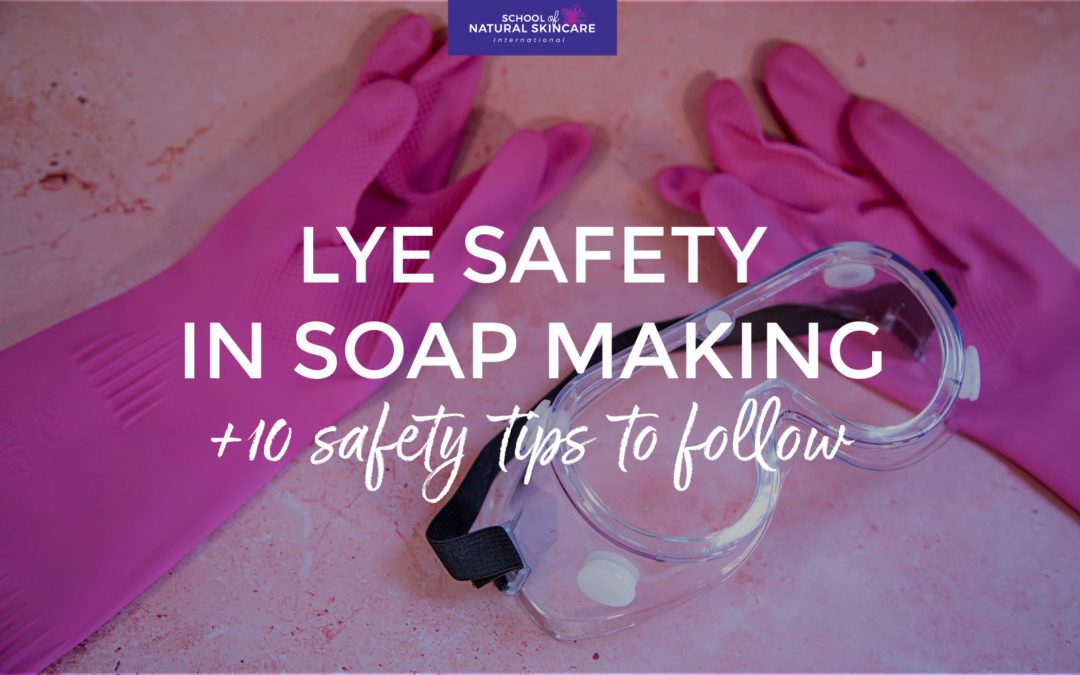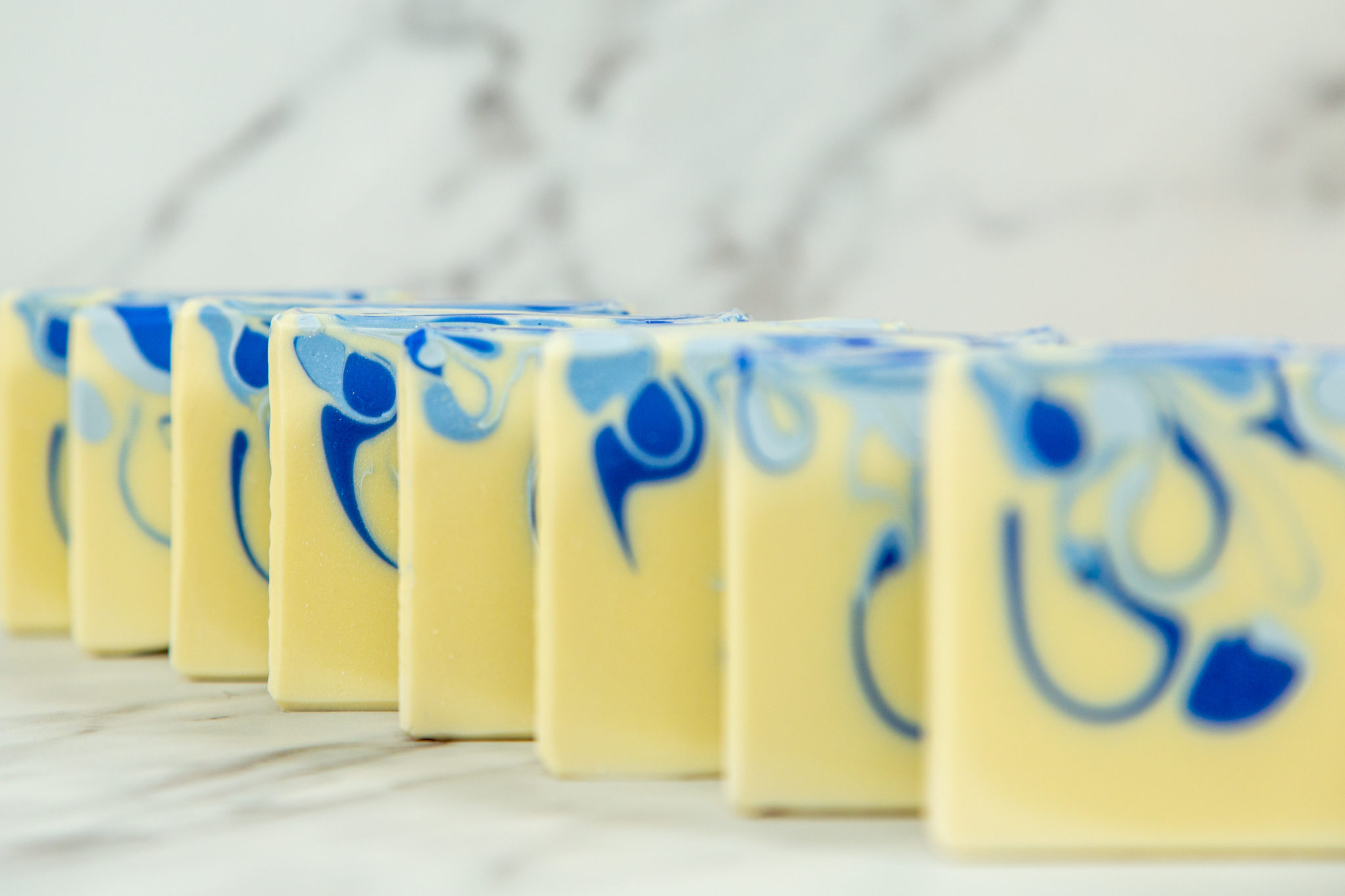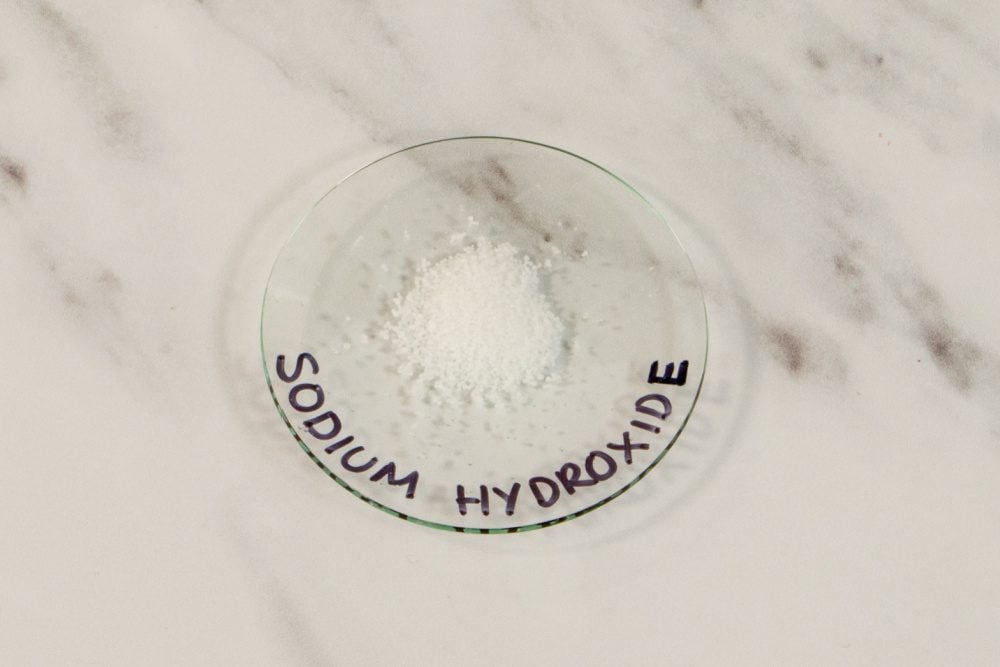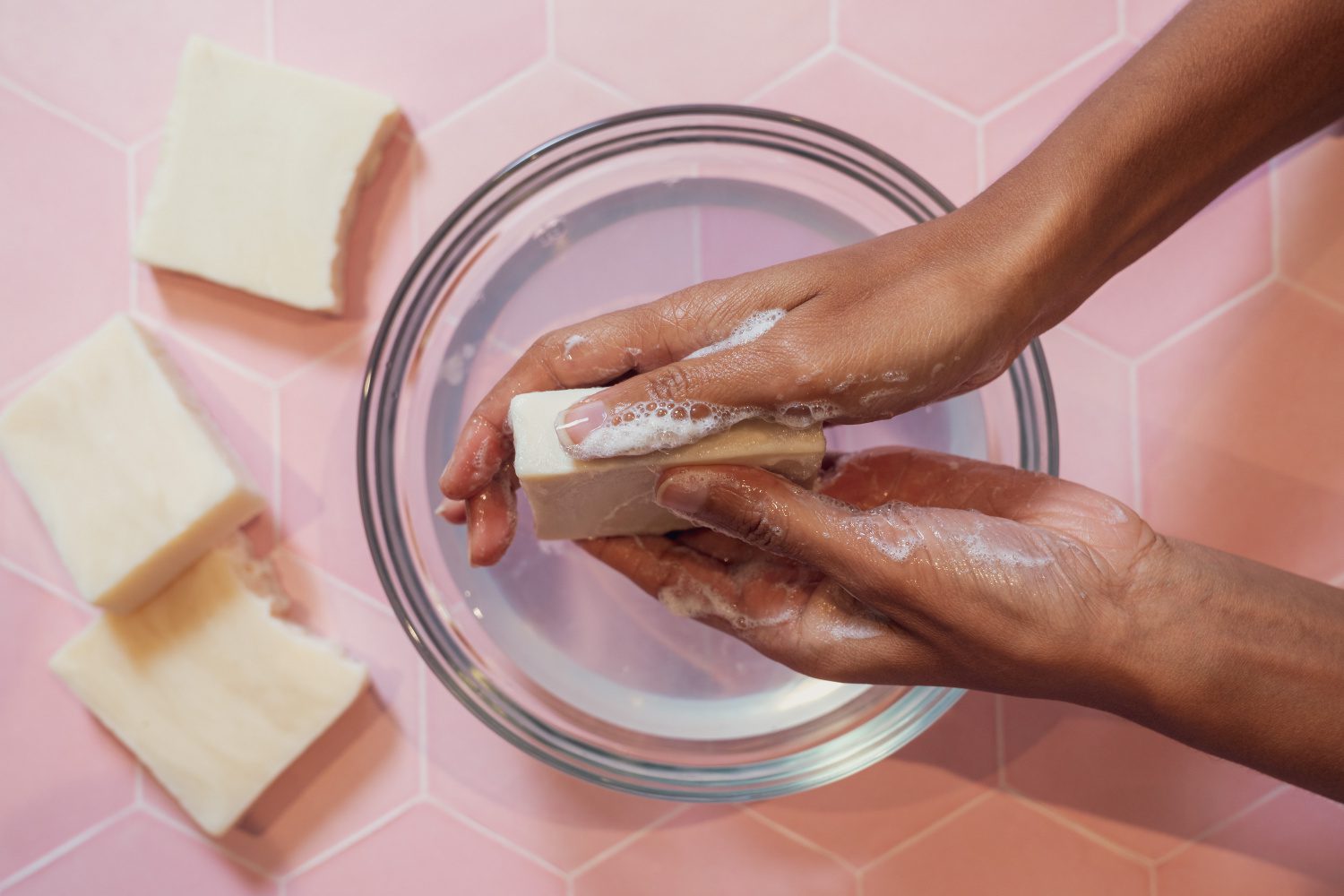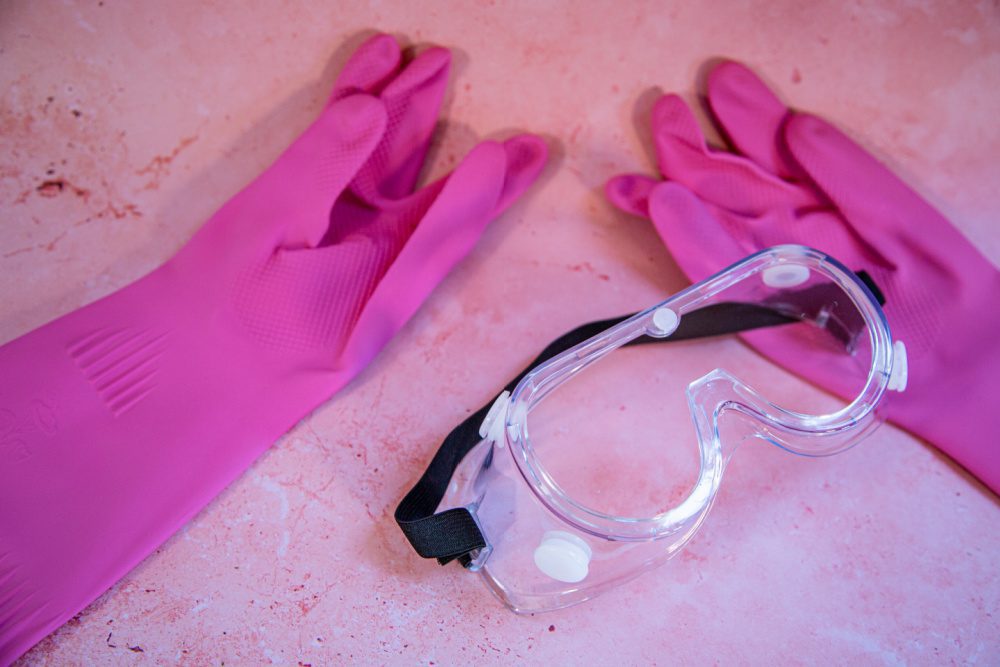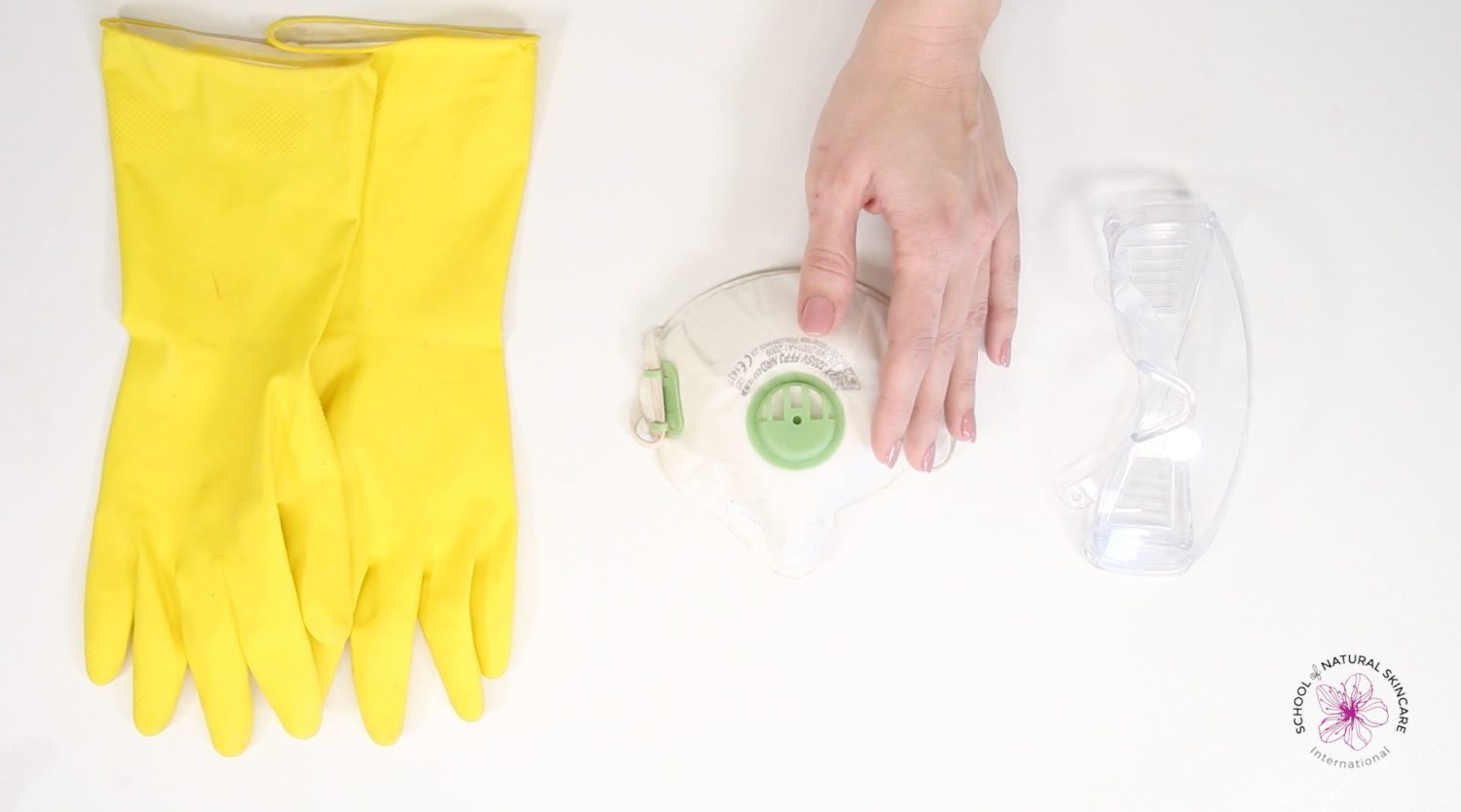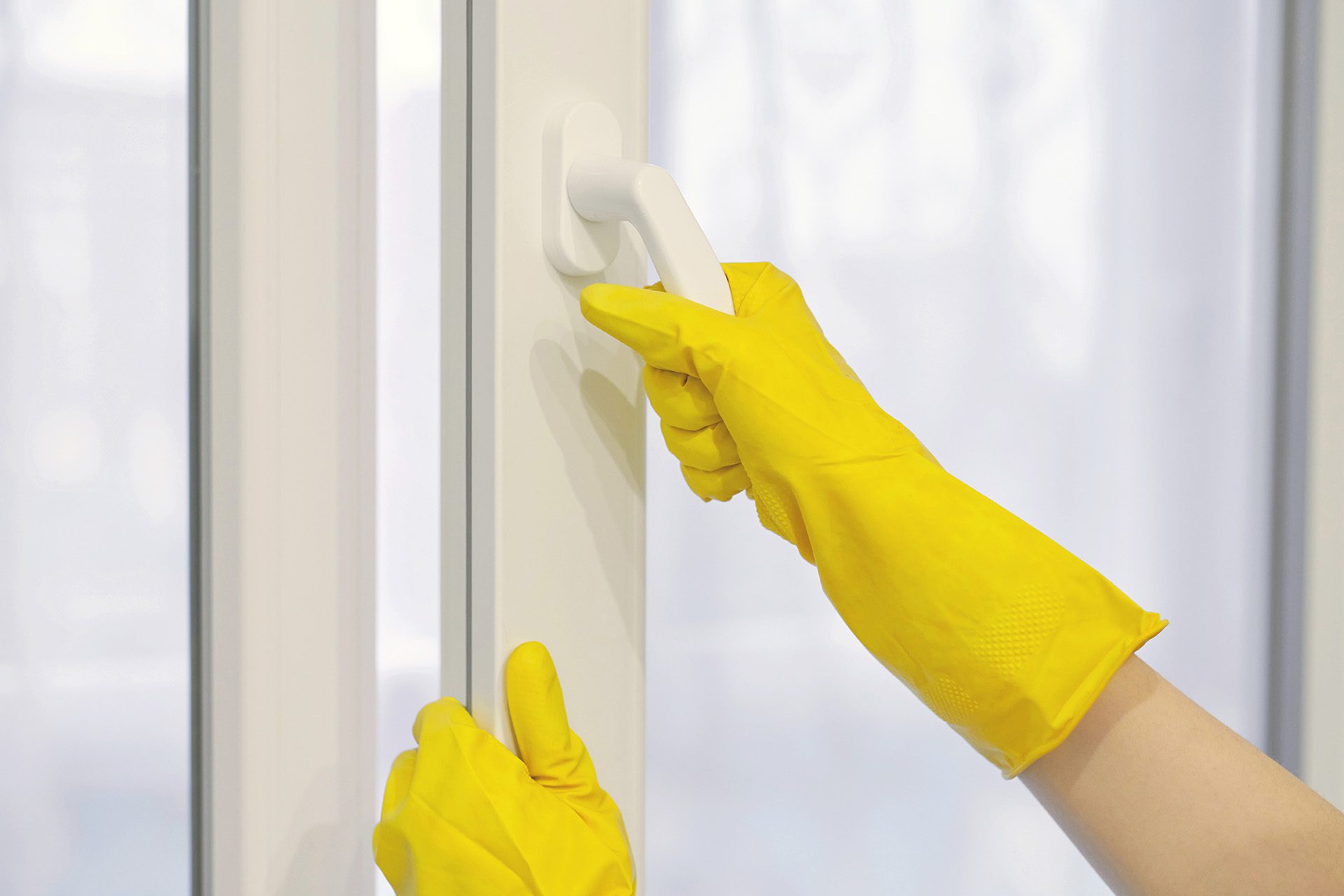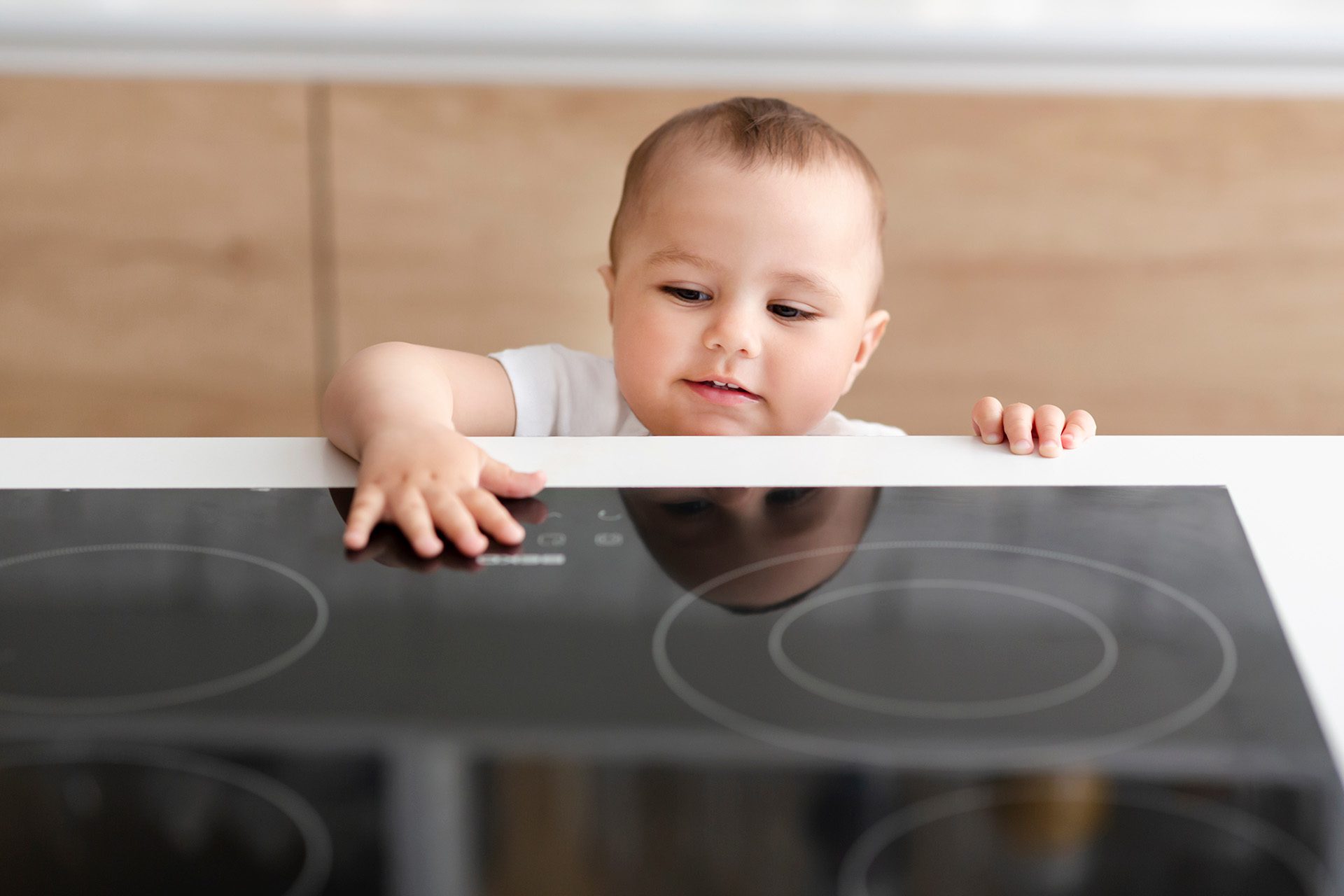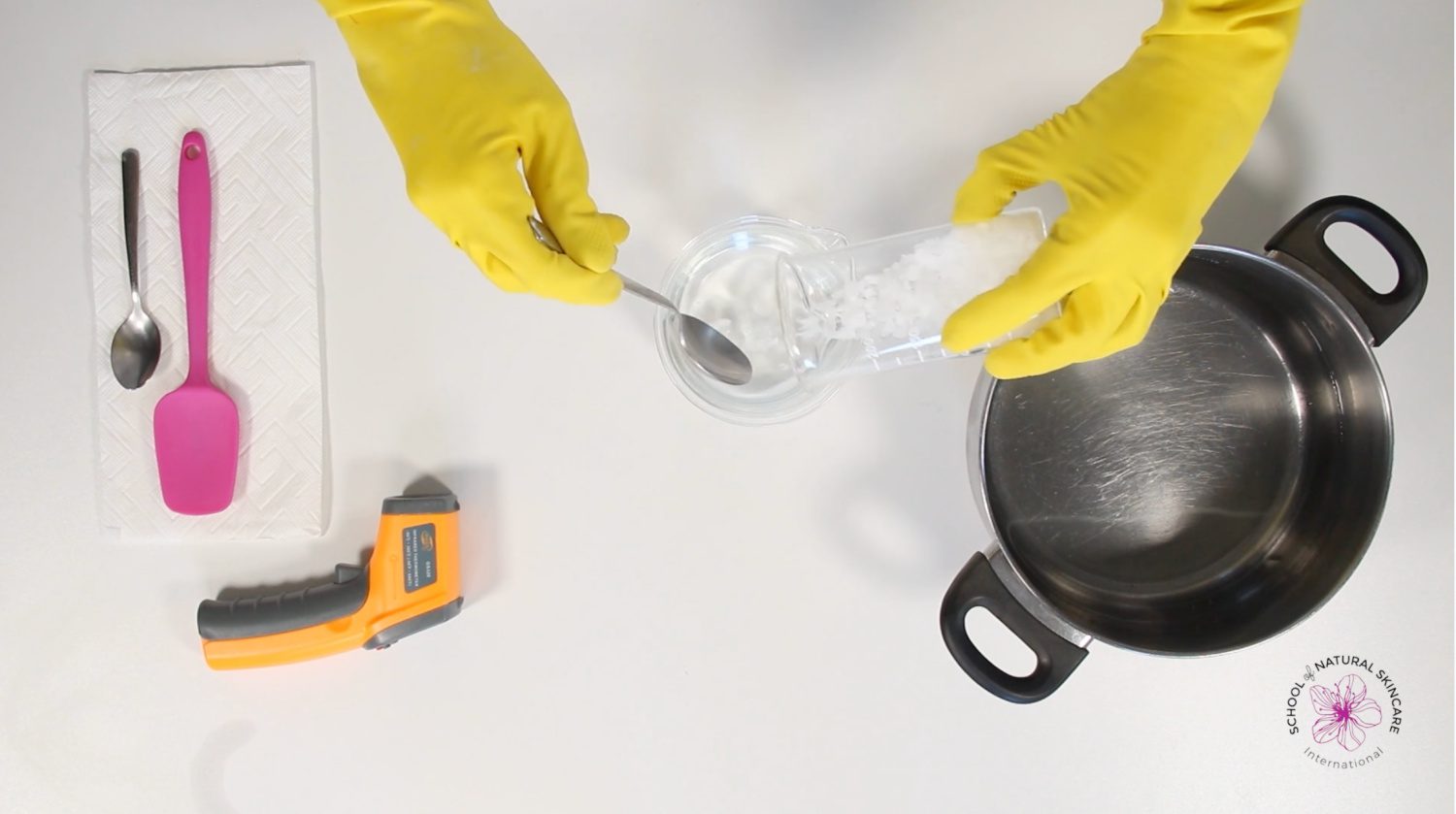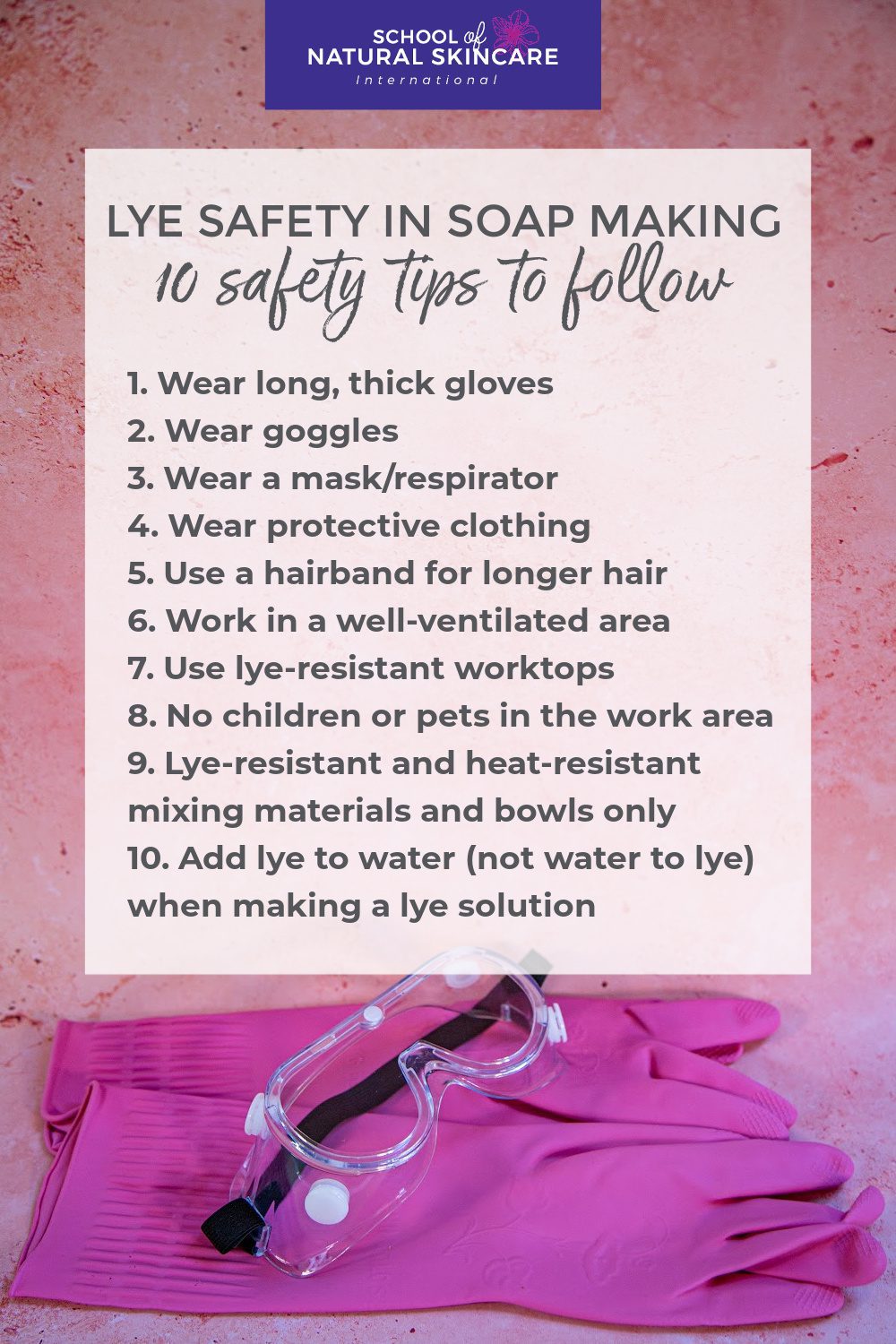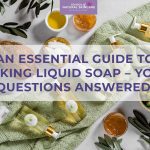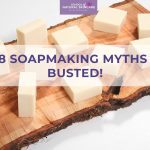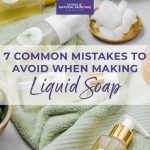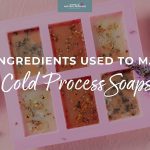Making homemade soap is very satisfying. It’s economical to make (both in terms of time and money) and nourishing to skin. However, before you get started with soap making there are important lye safety tips to follow.
You must understand the dangers of lye and therefore how to work with lye safely before starting soap making.
In this guide we’ll cover:
- What is lye in soap making?
- Lye dangers
- Lye safety: 10 safety tips you need to follow when making soap
What is lye in soap making?
Lye safety is such an important topic in soapmaking because you can’t make soap without lye.
Lye in soap making is a strong alkali (for example, sodium hydroxide or potassium hydroxide) that reacts with fat (for example carrier oils and butters) to form soap. This process is known as saponification. Chemically speaking, soap is defined as a salt of a strong alkali (lye) and fatty acid.
Sodium hydroxide (also known as caustic soda) is the lye used to make bars of soap in cold process and hot process soap making and potassium hydroxide is the lye used to make liquid soap. Both are caustic chemicals so it is essential to follow the proper lye safety guidelines when making soap.
Lye dangers
Here are three lye dangers it’s important to know about:
1. Lye is highly caustic
Lye (sodium hydroxide (NaOH) and/or potassium hydroxide (KOH)) and lye solutions are highly caustic. This means it is very corrosive and may cause damage (such as chemical burns and even blindness) if it comes into contact with the skin. Lye should never be inhaled or consumed – it can be fatal if swallowed.
2. Dissolving lye in water is a highly exothermic process
To make soap lye is mixed with water to make a lye solution. Dissolving lye in water is an exothermic process– it releases a large amount of energy in the form of heat. This causes lye solution to heat up to almost boiling point which creates a risk of burns and causes fumes to rise from the container which can be harmful when inhaled. Therefore always prepare your lye solution in a well-ventilated area.
3. Avoid lye coming into contact with aluminum
When lye solution is in contact with aluminum, it reacts to form highly flammable hydrogen gas. Avoid all contact with aluminum, for example, aluminum bowls and pots.
Is making soap at home really dangerous?
There are dangers to making soap at home but as long as you follow proper safety precautions you can make soap safely at home. Start with our ten important safety tips to follow which you can find below.
Is lye dangerous in soap?
You may be wondering then if lye is dangerous in soap.
One essential skill in soap making is calculating exactly how much lye you need to use to saponify the oils and butters in your recipe. As long as you calculate this correctly then there isn’t any lye left in the finished bar of soap meaning it is perfectly safe for use. The good news is that soap calculators are available to help you calculate how much lye you need to use.
Lye safety: 10 safety tips you need to follow when making soap
1. Wear long, thick gloves
Wear thick and long gloves to protect your hands. Medical-type latex gloves are short and will leave your wrists unprotected; they are also very thin and can tear, thus exposing your skin so are not suitable.
Cleaning-type rubber gloves are longer and thicker. Tuck your sleeves into the gloves so no skin is exposed.
Gloves need to be worn throughout the soaping process and during clean-up, since soap traces on the equipment can still contain unreacted lye.
2. Wear goggles
Wear eye protection to prevent any damage to the eye (which can result in injury or blindness) in the case of lye and/or soap splashing, especially during the mixing process.
3. Wear a mask/respirator
A respirator mask will protect you from hazardous lye fumes. The degree to which it will offer protection is dependent upon the grade of the respirator mask, but any mask is better than none as it will block at least some of the fumes.
4. Wear protective clothing
Wear protective clothing during soapmaking. Lye and unsaponified soap can damage textiles so it is a good idea to use protective work clothing, not regular clothes.
Protective clothing needs to include long sleeves, long pants and closed-toe shoes, so no skin is exposed.
5. Use a hairband for longer hair
If you have long hair, wear it tied back.
6. Work in a well-ventilated area
Prepare the lye solution in a well-ventilated place. If this is not possible, do it outdoors (for example, on a balcony) or by an open window, wearing a respirator mask.
7. Use lye-resistant worktops
Hardwood worktops can get damaged if in contact with water. Regular kitchen countertops and stainless steel worktops are lye-resistant.
It is still best to protect the area using paper (a couple of layers of old newspaper, or cardboard) and/or a plastic sheet.
8. No children or pets should be allowed in the work area
Make sure there are no children or pets in the soapmaking area throughout the duration of soapmaking.
9. Only use lye-resistant and heat-resistant mixing materials and bowls
Suitable materials for soapmaking and mixing lye solution include: polypropylene (PP), polyvinyl chloride (PVC), stainless steel and glass. Do not use aluminum containers or spoons.
10. Add lye to water (not water to lye) when making a lye solution
When preparing lye solution for soap making, weigh out both the lye and the water, then stir while slowly adding the lye to the water. IMPORTANT: Do not combine the two the other way around – do not pour the water into the dry lye. Keep stirring until all of the lye is dissolved.
How to make soap safely at home
There are so many benefits to making soap that we encourage you to follow the correct guidance and give it a go.
The trick to making your own soaps is to learn how to do it correctly, but fortunately, this can easily be achieved.
Cold process soap needs to be made in a very specific way, and by following the correct methods and using accurate information, it is a straightforward process.
You just need to know how!
We’re delighted to say that all of this, plus the essential guidance for Lye First Aid and much more, can be found inside our Cold Process Soap Making online course!
In our online, multimedia course on Cold Process Soap Making, you’ll:
- Get an introduction to soapmaking
- Learn the theory of saponification
- Discover the mandatory safety information
- Receive accurate and up-to-date tuition on how to make cold process soaps
- Learn all about the ingredient used to make cold process soaps, how to select them to give you the results you seek
- Access a collection of basic soap recipes and advanced soap recipes
- Get troubleshooting tips
In the advanced modules you’ll:
- Learn how to use mineral and plant-derived colorants to create beautiful effects in your soap bars.
- Discover how to add more advanced ingredients such as milk, sugar, salt or even alcohol to your soaps.
- Be able to pipe your soap: this technique can be used to create soaps that look like cupcakes!
- Learn about a variety of different soap swirling techniques in detail – what recipes to use when swirling, which soap molds and tools are suitable for different swirls, and how to cut finished soap to reveal the swirl.
- Follow our step-by-step video demonstrations so you have the confidence to carry out these techniques yourself.
This 5 module, multimedia, online course can be accessed by being a member of the Natural Cosmetic Formulation Club.
Loved reading about these 10 safety tips? Make sure to remember them by pinning them!

